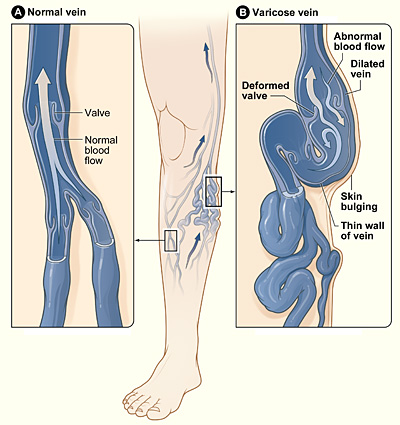What Causes Varicose Veins?
Weak or damaged valves in the veins can cause varicose veins. After your arteries deliver oxygen-rich blood to your body, your veins return the blood to your heart. The veins in your legs must work against gravity to do this.
One-way valves inside the veins open to let blood flow through and then shut to keep blood from flowing backward. If the valves are weak or damaged, blood can back up and pool in your veins. This causes the veins to swell.
Weak valves may be due to weak vein walls. When the walls of the veins are weak, they lose their normal elasticity. They become like an overstretched rubber band. This makes the walls of the veins longer and wider and causes the flaps of the valves to separate.
When the valve flaps separate, blood can flow backward through the valves. The backflow of blood fills the veins and stretches the walls even more. As a result, the veins get bigger, swell, and often get twisted as they try to squeeze into their normal space. These are varicose veins.
Normal Vein and Varicose Vein

The illustration shows how a varicose vein forms in a leg. Figure A shows a normal vein with a working valve and normal blood flow. Figure B shows a varicose vein with a deformed valve, abnormal blood flow, and thin, stretched walls. The middle image shows where varicose veins might appear in a leg.
You may be at higher risk for weak vein walls due to increasing age or a family history of varicose veins. You also may be at higher risk if you have increased pressure in your veins due to overweight or obesity or pregnancy.
|

